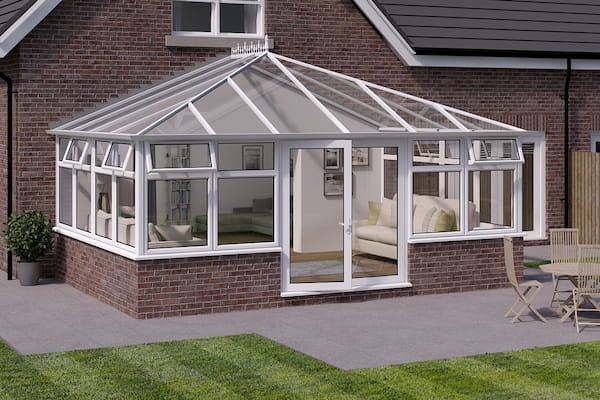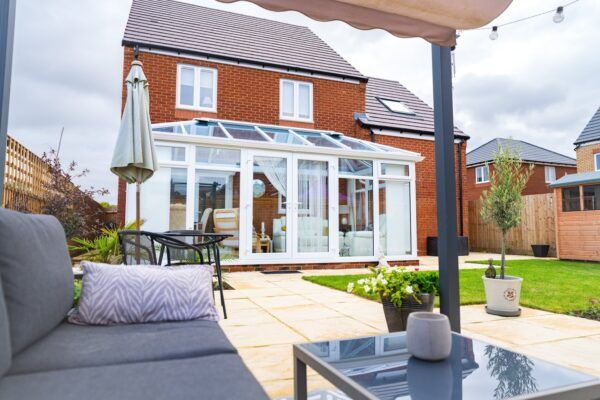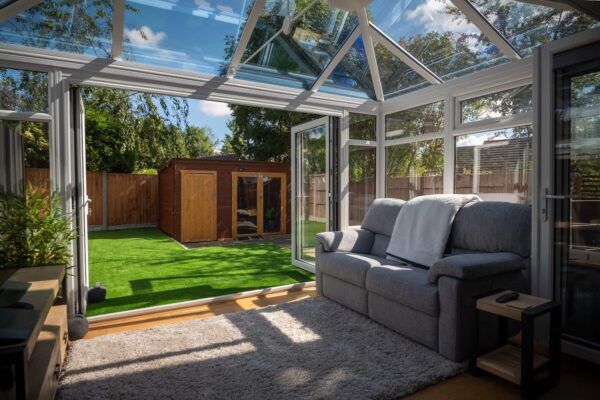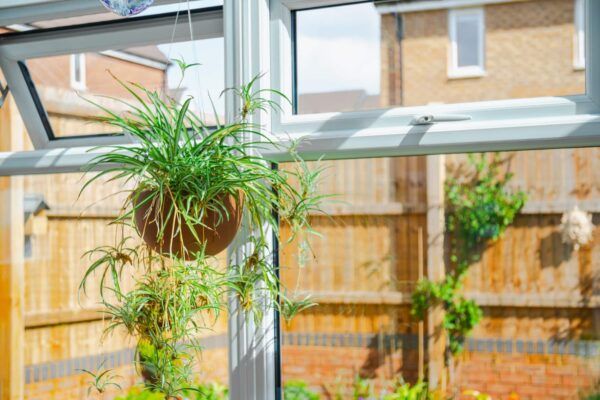With the increasing demand for conservatories in various designs and sizes, some of the most common questions we’re asked are ‘What is an Orangery?’ and ‘What is the difference between an Orangery and a conservatory?’.
To help you decide which style is right for you, we’ve put together this guide on the differences between a conservatory and an Orangery.
Contents:
- What is an Orangery?
- What is a conservatory?
- The difference between a conservatory and an Orangery?
- Orangery vs conservatory FAQs
What is an Orangery?
Unlike a fully glazed structure, an Orangery is a home extension that is primarily a brick structure with large glass windows. While it shares some similarities to a standard conservatory, the materials used and the design differ, giving a more robust and solid feel.
Orangeries were historically used for growing citrus trees and exotic plants during the colder months, making them a symbol of luxury and sophistication.
Orangeries were historically used for growing citrus trees and exotic plants during the colder months, making them a symbol of luxury and sophistication.
At ConservatoryLand, we also offer Hipped-Back Orangeries a stylish variation on the classic design. Their sloping hipped roof not only adds architectural elegance but also maximises the entry of natural light. Additionally, the box gutter and pitched roof connecting to your home make it ideal for properties with height restrictions, offering both practicality and style.
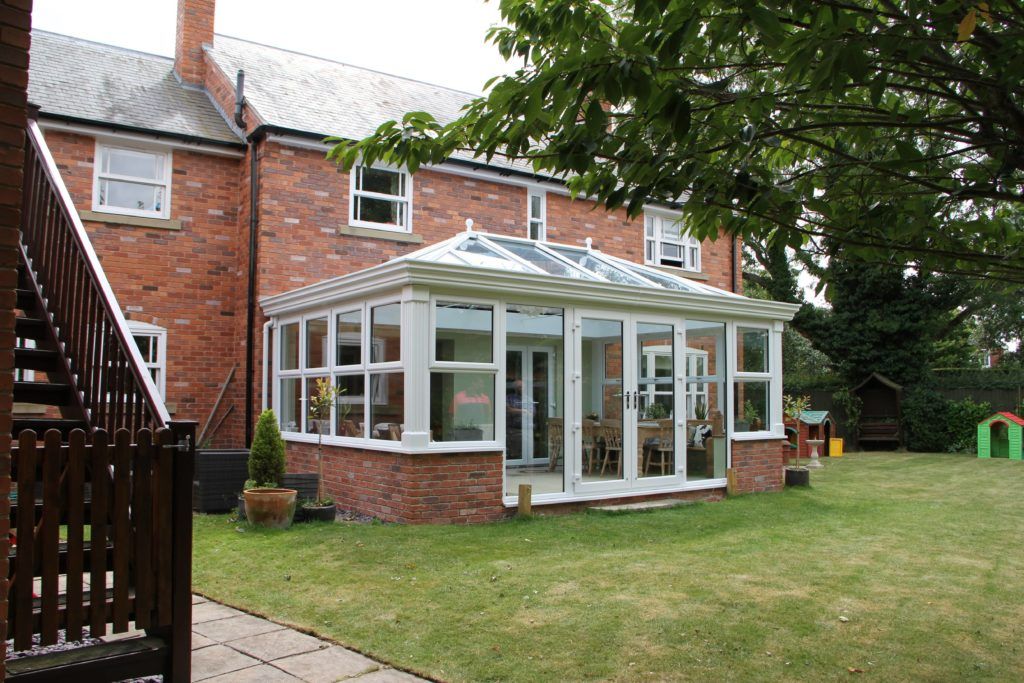
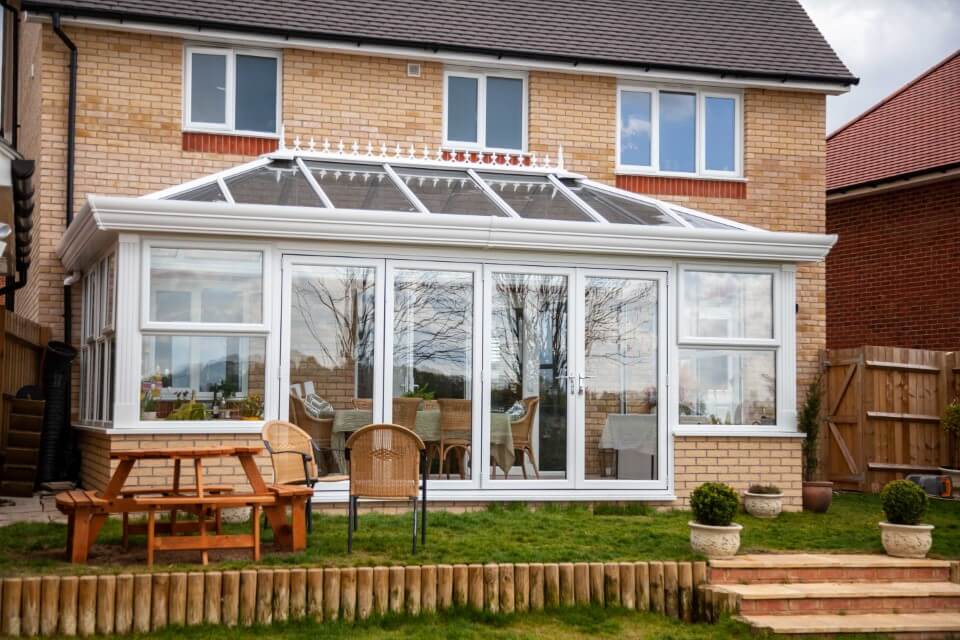
What is a conservatory?
A conservatory is a fully glazed home extension, known for its expansive use of glass in both the walls and the roof. This makes conservatories lighter, airier, and perfect for those looking to bring the outdoors inside.
However, with so much glass, conservatories can be more susceptible to seasonal temperature fluctuations, though this is easily managed with modern features like our Solar Control glazing, which helps maintain a consistent temperature year-round.
Conservatories are characterised by their extensive use of glass frames and roofs, creating a bright and airy atmosphere. They serve as versatile living spaces, often used as sunrooms, social rooms or dining areas, offering both outdoor and indoor living.
Originally designed to protect plants from the elements, conservatories have evolved into versatile living spaces. The all-glass structure creates a bright, open atmosphere, making them ideal as sunrooms, social rooms or dining areas.
With various types of conservatories available, it’s now easier than ever to find a design and shape to suit your needs.
Some of the most popular varieties include:
- Lean-to – a simple style perfect for both modern and traditional homes
- Gable – this type of conservatory adds character and plenty of natural light, thanks to its pitched roof elevation
- Victorian – classic and distinctive, this style features a beautiful bay front
- Edwardian – a stylish conservatory type with sleek lines
- Hipped-Back Edwardian – a versatile option to suit homes with height restrictions
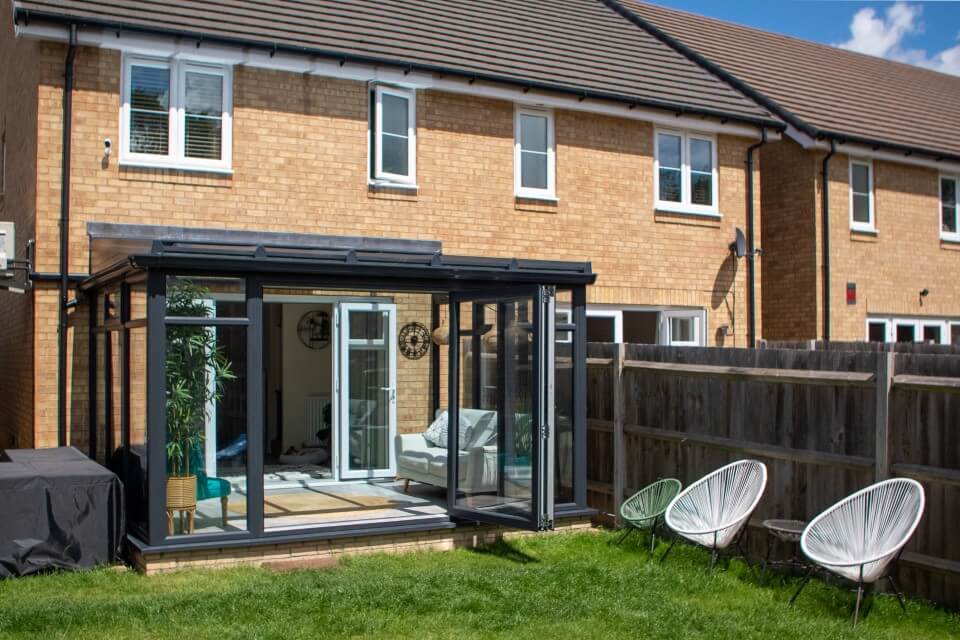
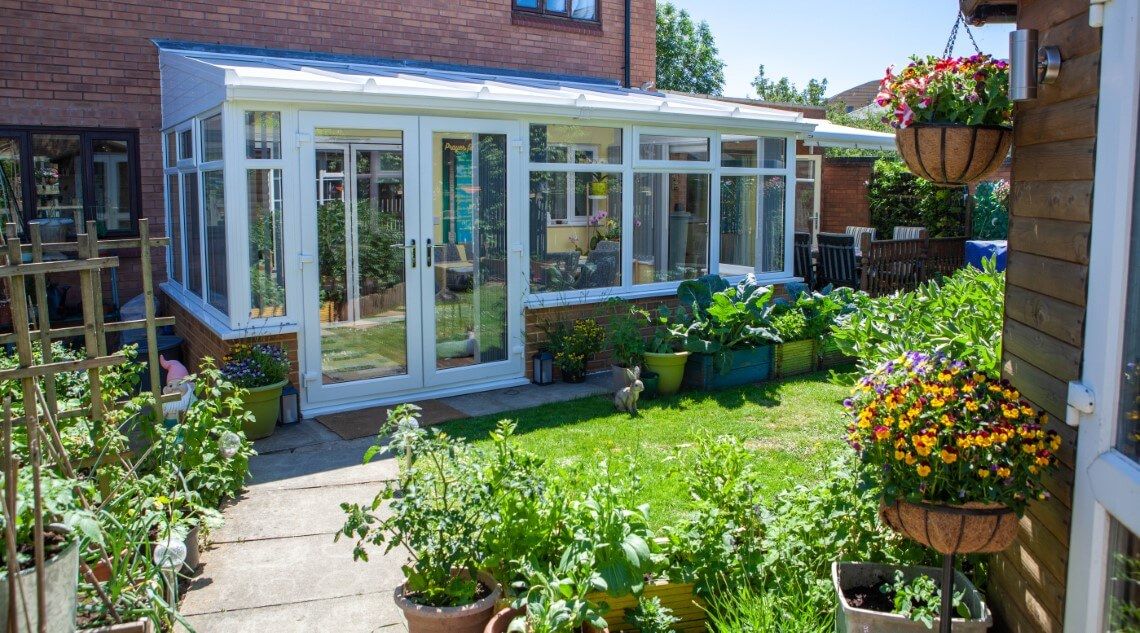
The difference between a conservatory and an Orangery?
An Orangery is a home extension characterised by a solid flat roof perimeter with a central glazed area, combining traditional brickwork with large windows. In contrast, a conservatory typically features a fully glazed roof and walls, allowing for maximum natural light.
This key difference in roof structure defines their overall atmosphere. While an orangery’s partially supported roof permits the installation of spotlights for evening use, a conservatory’s glass design floods the space with sunlight.
The interiors also differ. An Orangery’s roof is partially supported by a deep pelmet, which allows for the installation of spotlights, perfect for evening use or rooms that don’t get much sunlight. While conservatories flood your space with natural light, thanks to their glass sides and roof, making them ideal for enjoying sunny blue skies from the comfort of your home.
The following table will help you to understand the differences between a conservatory and an Orangery.
| Aspect | Conservatory | Orangery |
| Roof | Typically a polycarbonate or glass roof. | Features mostly glass and solid materials. |
| Walls | Mostly constructed with glass frames. | Partly brick or stone structure with fewer glass panels. |
| Natural Light | Abundant natural light due to extensive glass. | Offers natural light but with a more balanced mix of glass and solid materials. |
| Temperature Control | Prone to temperature fluctuations but counteracted by our Solar Control glass. | Better temperature control, suitable for year-round use. |
| Aesthetics | Modern and open design with a spacious feel. | A more substantial and traditional appearance. |
| Use | Suited for living spaces and dining areas. | Often used as kitchens, lounges, dining areas and garden rooms. |
| Privacy | May require blinds or shades for privacy. | Offers more privacy due to solid walls. |
| Cost | Generally more cost-effective. | Tends to be higher in cost due to materials and construction. |
Is an Orangery cheaper than a conservatory?
An Orangery is typically a little more expensive than a regular conservatory because of how they’re built and the materials used. Similar to a conservatory, an Orangery acts as an extension to a property. It’s a great addition to any home, adding light, extra room and value to its overall worth.
Find out the cost of an Orangery or conservatory best suited to you using our conservatory price guide or Orangery price guide.
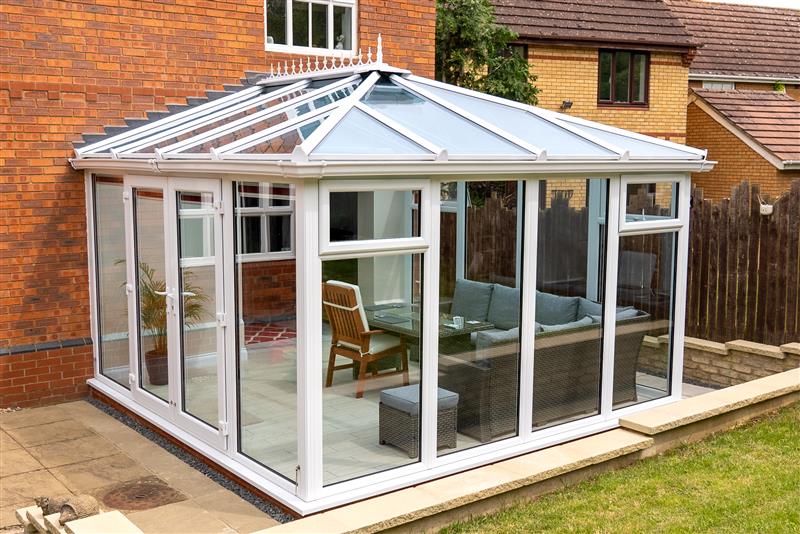
Orangery vs conservatory FAQS
Do you need planning permission for an Orangery?
Like conservatories, it is doubtful that you will need planning permission because an Orangery isn’t likely to be so big as to need it.
However, it’s always best to check with your local authority first, especially if your property is in view of others or in a highly sought-after plot of land.
We’ve compiled a useful guide on Orangery planning permission, so you can see whether you need it or not.
Is an Orangery warmer than a conservatory?
Due to the slight differences in structure and roofing used on an Orangery, it’s able to retain more heat than the average conservatory. However, with efficient uPVC frames and triple-glazed glass, conservatories can be just as warm.
When does a conservatory become an Orangery?
A conservatory typically becomes an Orangery when it incorporates more brick or stone walls rather than being primarily made of glass. An Orangery is often defined by its hybrid design, combining the light and openness of a conservatory with solid walls, giving it a more substantial, room-like appearance.
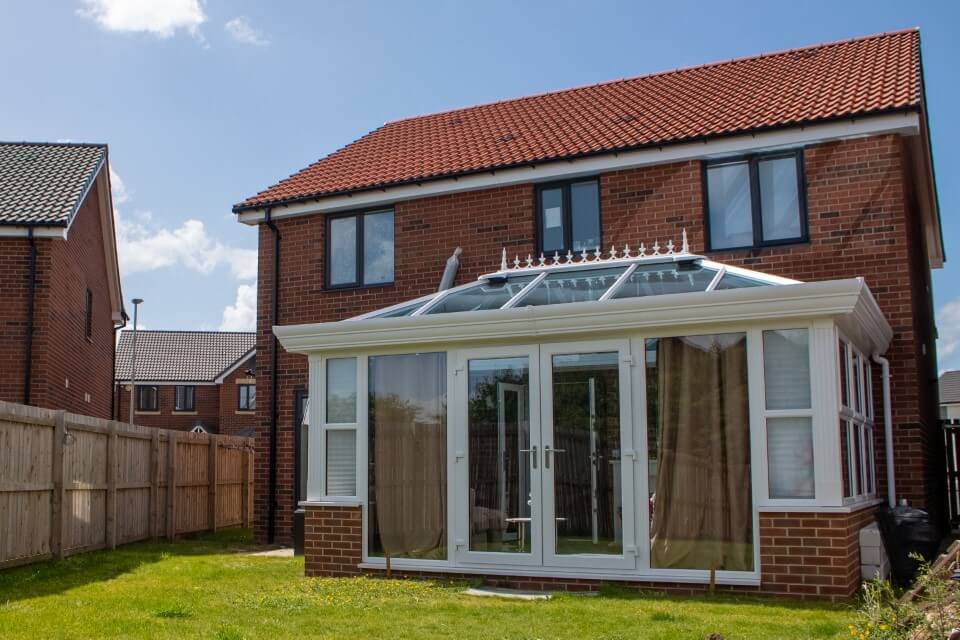
At ConservatoryLand, we offer high-quality Orangeries tailored to your exact specifications. You can learn more about the costs of your dream build by speaking to our sales team
Conservatory vs Orangery: Which should I choose?
When deciding between a conservatory and an orangery, it’s essential to think about how you plan to use the extra space and how it will enhance your lifestyle.
Do you want a bright, sunlit room with garden views? If your goal is to create a space that feels open and airy, a conservatory is an excellent choice. Its fully glazed design allows for a seamless connection to your outdoor environment, making it perfect for relaxation or socialising.
On the other hand, if you’re looking for a more versatile, multi-purpose room, an Orangery may be the way to go.
The solid brick structure and central glazed roof create a comfortable environment suitable for various uses, whether as a home office, gym or stylish dining area. The additional insulation provided by the brickwork ensures that the space remains comfortable throughout the year.
Consider whether you want to add value to your home as well. While both options can enhance your property’s appeal, Orangeries often blend more seamlessly with existing architecture, providing a more premium finish. Conservatories are generally more affordable, offering a beautiful and bright space without straining your budget.
How we can help
With many styles and customisation options available, it can be hard to know where to start.
Our online quote engine can help you get an estimate for your Orangery or conservatory, giving you a clearer picture of what works best for you.

